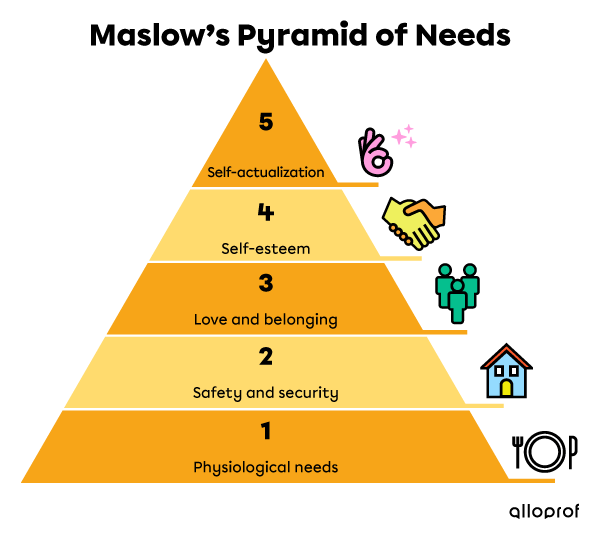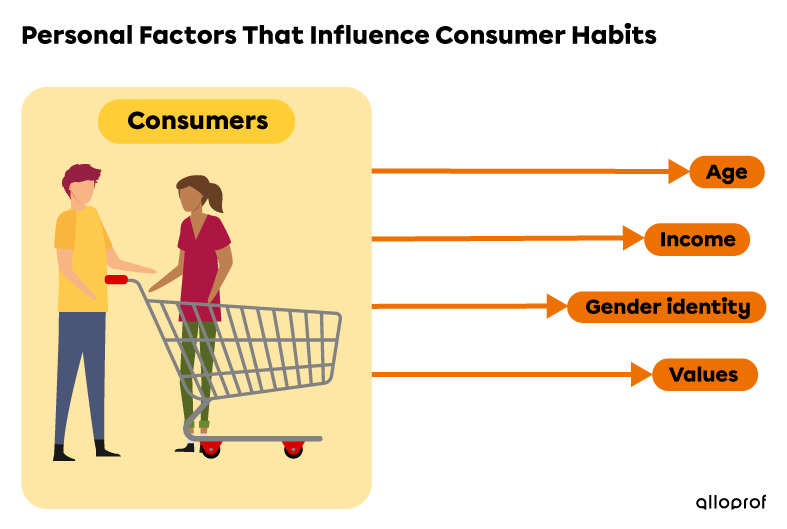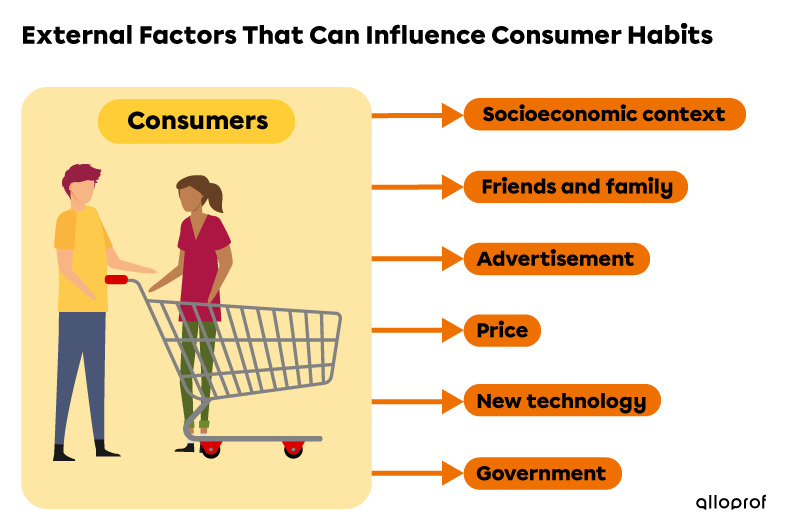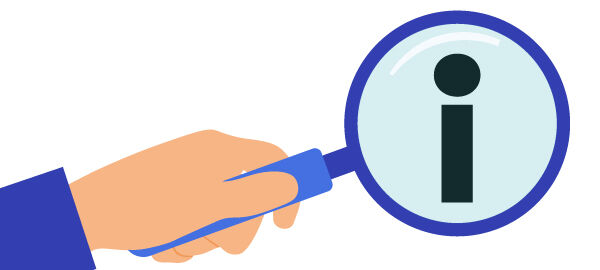If you look around, you will see consumption comes in many forms. People consume products and services to meet their needs, but also for fun. Consumption provides for your needs, first and foremost, but also your wants. What is the difference between the two?
Your needs are different from your wants. Needs must be met, such as the most basic ones like breathing, drinking, eating and sleeping.
Abraham Maslow (1908-1970) was an American psychologist who developed a theory classifying needs into categories, often represented in the form of a pyramid. According to his theory, the categories are hierarchical, meaning the needs at the top of the pyramid can only be met when the needs at the bottom have been fulfilled.
Before meeting your need to belong, you must be able to meet your physiological needs, such as eating, drinking and sleeping, and your safety needs, including shelter and protection from danger.
On the other hand, wants are how you choose to meet your needs.

In winter, you need warm clothes. That is a need. However, a want would be choosing the colour, style and brand of clothing.
Needs and wants have no limits. Satisfying a want usually leads to another want. However, time, money and energy have limits, so you cannot satisfy all your wants.
This means that to obtain a good or a service, you must make a choice. When you choose a good or service, you have to give up other things since your resources are already being used for this purchase. This cost is called the opportunity cost or alternative cost.
Sofia wants to replace her laptop computer with a more powerful model. She would also like to replace her winter coat because her current one is showing signs of wear and tear.
Sofia’s income prevents her from making both purchases at the same time. She has given up one purchase in order to be able to make the other.
Consumption patterns are different for everyone. A combination of personal and external factors influence your consumption patterns. Patterns change over time because of societal changes, which technologies are available and what you are going through in your life at that moment.
Some influencing factors are specific to you, including your age, your income, your gender identity and your personal values.

Age
Age is a key factor in your consumption patterns, because you do not buy the same things now that you did when you were in elementary school. Throughout your life, your needs and tastes change.
Income
Your income has a direct impact on your ability to purchase goods and services, so it also influences your consumption patterns.
Gender identity
Gender identity has an impact, especially on things concerning your body. Your needs may be different when it comes to health and personal care services or clothing.
Values
Values can also influence your consumption patterns and could lead you to choose more environmentally friendly products.
Some factors are related to the society or the environment in which you live. Whether it's your family and friends, advertising, the socio-economic context or government, these external factors can influence your consumption patterns. The emergence and omnipresence of new technologies have also significantly influenced the consumption patterns in our society.

The socio-economic context
The socio-economic context has an important effect on consumption patterns of the population. When the economy and society are doing well, people spend more on entertainment (movies, restaurants, travel, etc.). But if the economy and society are in a downturn, people prioritize basic spending (food, clothing, etc.) and reduce spending on entertainment.
Family and friends
Everyone around you has certain spending habits. Whether it’s your parents or your friends, they can be a reference point when you make your choices.
Dimitri’s friends are involved in the zero waste movement. They introduce him to reusable cloth bags for snacks, bamboo toothbrushes and bulk toothpaste. Dimitri is considering adopting some of these practices. On his last visit to the grocery store, he bought reusable cloth bags for his fruits and vegetables instead of using plastic bags.
Advertising
The main purpose of advertising is to convey a message to you to change your behaviour so that you want to buy certain goods or services. Advertising has a strong influence on your consumption patterns.
To learn more about this topic, consult the concept sheet on the Roles of Advertising.
Price
Price influences your choices based on your purchasing power.
Purchasing power takes into account a person’s disposable income to determine the goods and services they can afford to buy. The lower the price, the greater the purchasing power.
New technologies
New technologies have greatly changed the population’s consumption patterns. Not only are these technologies themselves new things to consume, they also serve as tools for purchasing goods and services online. Computers, tablets and smartphones have become commonplace in the last decade. These devices have profoundly changed the way people communicate with each other and consume goods and services.
Governments
The provincial and federal governments use economic policies to influence the population’s consumption patterns. These actions translate into consumption taxes (GST and QST).
To learn more about this topic, check out the concept sheet Taxes on Goods and Services.

Do you have questions about goods or services? There are many places to look for information.
Websites and discussion forums
A manufacturer’s or merchant’s website is a good place to find out more about a good or service. The website should list the main features of what is being offered.
Another source of information is forums where consumers can post positive or negative opinions and share their comments. However, you need to be careful because these comments are not always reliable.
Consumer rights organizations, such as the Office de la protection du consommateur or Option consommateurs, provide information on a wide range of consumer-related topics.
Specialized magazines
Some magazines specialize in consumer-related topics and can provide test results comparing different goods or information on the use of a good. These magazines use experts and should be objective in their articles and tests. The content of these reviews is often available online. The Protégez-vous magazine is a great example.
Current event television shows
Some current event shows, such as La Facture or L’indice McSween, also focus on consumer-related topics. These programs investigate certain issues and then present the results.
As you can see, many sources of information exist. You can find many of them by doing research. But how do you know if these sources are reliable?
You should check a few things:
- Who is the author? The author should be identified, whether they are a person, an organization or a company.
- Does the author have relevant experience on the topic? In the case of an organization, you can check if it is an official or recognized organization. For an individual, their position and expertise are good indicators.
- How old is the information? Is it recent? Recent information is more reliable than information that has not been updated for a long time and which may not take into account recent changes.
Sometimes the decision to buy a good or service is made so quickly that little thought goes into its purchase. These impulse purchases can cause disappointment (“I didn’t need this”) and financial problems (“How am I going to pay for it? The price is way over my budget”). Here’s a simple trick before you buy something on impulse: wait five seconds and ask yourself, “Do I need this?”
To make more rational choices when buying goods or services, here are some things to consider:
-
Determine your need or want: Ask yourself if you need the good or service you want to buy. If you decide to go ahead with a purchase, set your criteria, like the price or essential features.
-
Gather information about the good or service: Use reliable information sources and make sure you know what is being offered. Be sure to use the Office de la protection du consommateur or Associations de consommateurs resources and company websites to gather information.
-
Evaluate the opportunities: After you have the information, you can compare options and consider what is offered with the good or service (warranties, maintenance service, etc.), not just the price.
-
Deciding to buy: Once you have made your choice, you can decide to buy or continue to look for a better solution. Consider how you would like to make the purchase and whether credit is really the best way to finance it.
- Getting the good or service: When you are ready to make your purchase, pay attention to the condition of the good(s) or the quality of the service, the sales contract and the merchant’s return or refund policy.
-
Use and evaluate the good or service: After purchasing the good or service, keep the important documents related to the purchase and rate the service you received.
Responsible consumerism means choosing goods and services that reduce environmental impacts as much as possible and respect human dignity and rights.
Responsible consumerism means asking questions about what you consume in order to have a positive impact. It involves all types of goods and services, from clothing to electronics, food and transportation choices.
Here are some basic guidelines for shopping more responsibly:
-
Only make a purchase when it is truly necessary.
-
Choose goods or services that are sustainable and of good quality.
-
Favour local products.
-
Choose goods or services that have the lowest environmental impact and consider their entire life cycle.
-
Choose goods that can be repaired, if necessary.
-
Reuse by buying used goods or donating goods that you no longer need.
-
Make sure that the goods or services respect human dignity and rights (no child labour, decent wages, safe working conditions, etc.).
See the Équiterre website for more details.
Collectif, Mes dossiers, p.4-7
Collectif, Profil. Enjeu Consommer des biens et des services, p.4-5 et 10
Collectif, Finances en jeu. Enjeu Consommer des biens et des services, p.24-25